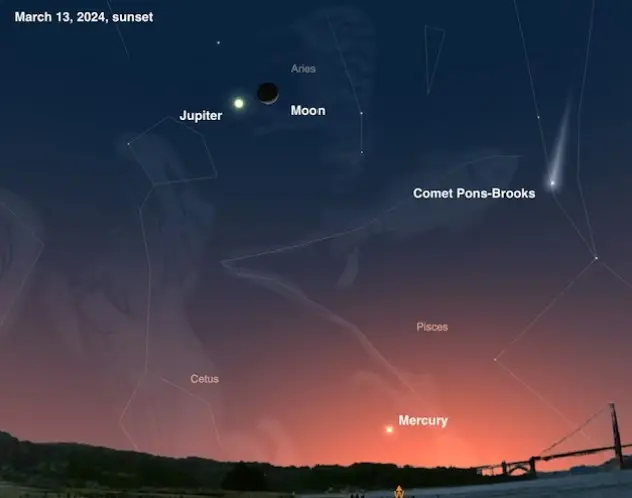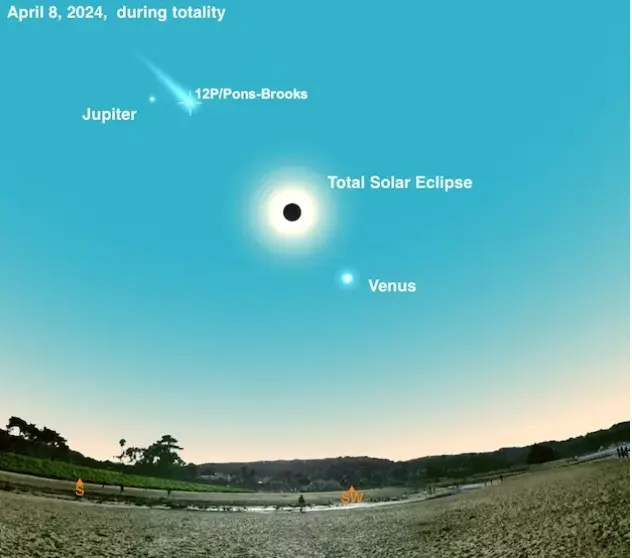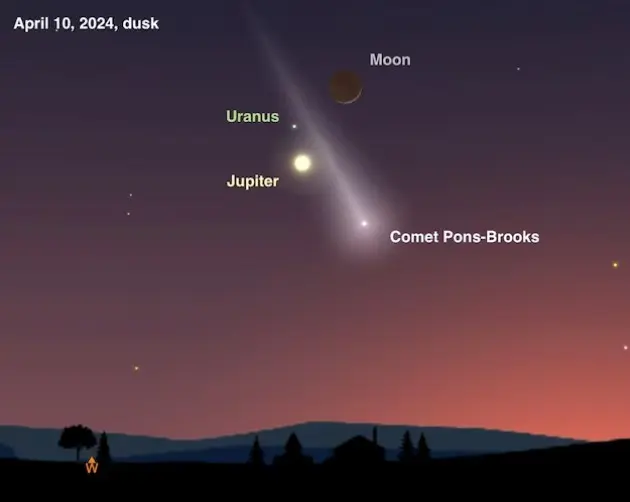The year 2024 promises to be a remarkable period for astronomy enthusiasts worldwide, with a series of celestial events set to dazzle the night sky. These phenomena, highlighted by National Geographic, offer skywatchers numerous opportunities to witness the universe’s wonders. From meteor showers to solar eclipses, the upcoming 12 months are packed with not-to-be-missed astronomical phenomena.

Expressive image of Earth from space
January Kickstarts with Quadrantids Meteor Shower
The new year begins with NASA describing the Quadrantids Meteor Shower, peaking on January 3-4, as one of the best meteor showers in the astronomical calendar. This is followed by a striking conjunction of the Moon and Jupiter on January 18, offering a spectacular view of the solar system’s largest planet alongside a glowing half-moon.

February to April: Conjunctions and a Comet’s Close Approach
February 14, March 13, and April 10 will see the Moon and Jupiter meet again in a series of conjunctions following the Moon’s monthly orbit around Earth. In April, a giant comet, 12P/Pons-Brooks, three times the size of Mount Everest, will pass near Earth, adding to the year’s celestial excitement.

May’s Eta Aquarids Meteor Shower
The Eta Aquarids Meteor Shower reaches its peak on May 4, promising an especially dark sky for optimal viewing conditions. This event will be more visible in the Southern Hemisphere, with an expected 20-30 meteors per hour, while the Northern Hemisphere can expect 10-20.

June Welcomes the Summer Solstice
June 20 marks the Summer Solstice, the longest day of the year in the Northern Hemisphere, signaling the astronomical start of summer.
August’s Perseid Meteor Shower and a Supermoon
Mid-August brings the Perseid Meteor Shower, one of the most anticipated annual meteor showers, peaking with up to 60 meteors per hour. August 19 will also present the first of four supermoons in 2024, coinciding with a rare ‘Blue Moon’ event, where two full moons occur in a single calendar month.
September’s Comet and Supermoon
Comet A3 Tuchinshan-ATLAS, first spotted in February 2023, is expected to become a spectacular sight by late 2024. September 17 will feature another supermoon, appearing larger than usual due to its proximity to Earth.
October’s Solar Eclipse and a Third Supermoon
The Western Hemisphere will enjoy a second solar eclipse on October 17, along with the third supermoon of the year.
November: The Final Supermoon of 2024
November 15 marks the year’s final supermoon, rounding off a year rich in lunar events.
December’s Moon-Venus Conjunction
The year concludes with a striking alignment of the Moon and Venus on December 4, visible through binoculars shortly after sunset.
This compilation of celestial occurrences for 2024 offers a unique opportunity for sky watchers to experience the wonders of the universe from Earth. The skies will be a canvas of cosmic events, making 2024 a memorable year for astronomy enthusiasts.

